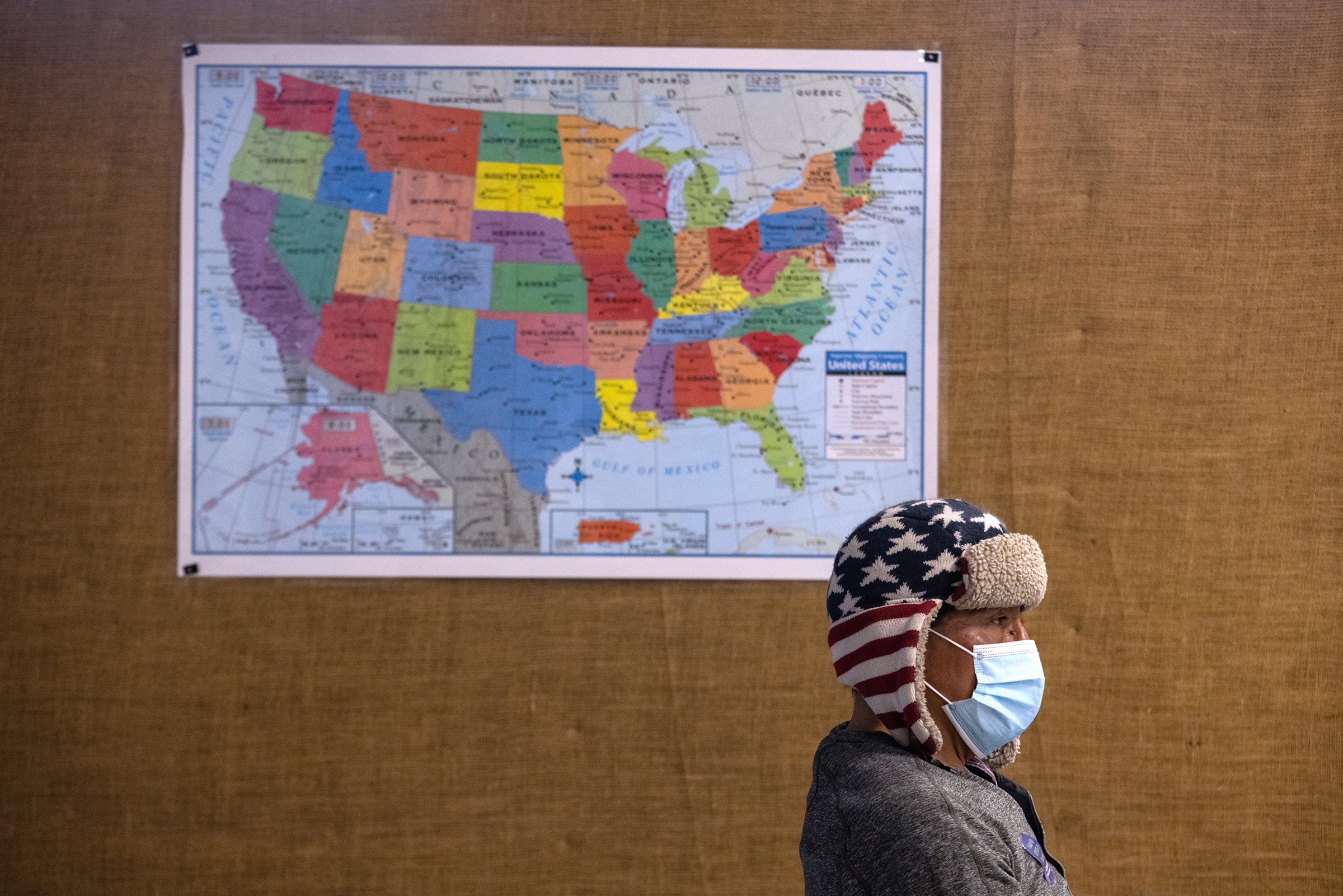
.
Stories of such excessive obstacles are fairly typical and might assist discuss why Hispanic and Black people in numerous states are getting immunized at disproportionately lower rates than white or Asian people– regardless of having a greater burden of COVID-related death and disease. The Kaiser Household Foundation gathers information onCOVID cases, deaths and vaccination rates amongst individuals who recognize as Black, white, Asian or Hispanic. Scientific American envisioned these information for 5 populous states with a few of the worst COVID break outs: California, Texas, Florida, New York City and Illinois. The graphic below shows that Hispanic individuals had a few of the most affordable vaccination rates proportional to their share of the population, especially in California and Texas. Black individuals in New York, Illinois and Florida are getting immunized at especially lower levels.
Many factors might be behind these disparities [see additional graphics]: Age minimums for COVID vaccination might favor white Americans, who have a longer life expectancy than Black Americans.
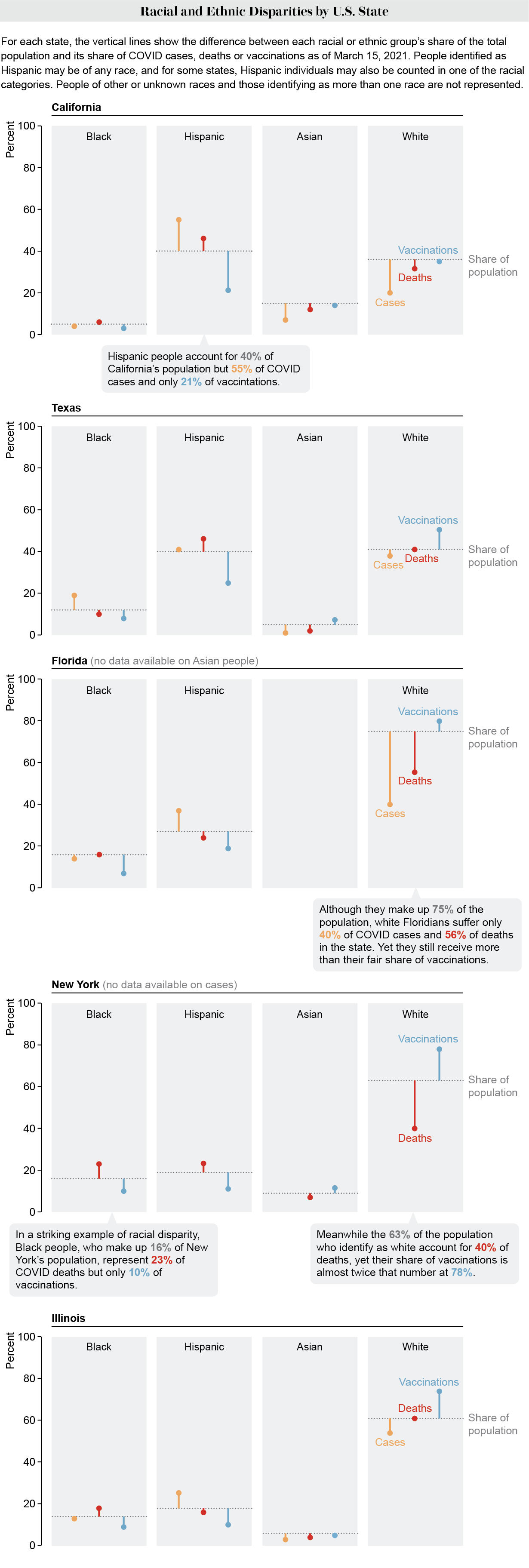
One of the main qualifications for a COVID vaccine in numerous states is being older (generally age 60 or above), which is known to be amongst the most significant risk aspects for severe illness and death from the novel coronavirus. Since of Black Americans’ shorter life span, fewer of them may be qualified for a vaccine– despite being at a higher danger of death than similar-aged or older white individuals.
Twin doctors Oni and Uché Blackstock wrote about this variation in a recent Washington Post op-ed calling for lower age limits for Black individuals to get vaccinated.
Remarkably, Hispanic people in the U.S. have a higher total life span than non-Hispanic white individuals, despite normally having a lower socioeconomic status. Latinx people have likewise had the biggest drop in life span since of COVID, so it does not make sense to raise the age cutoff for vaccination in that group.
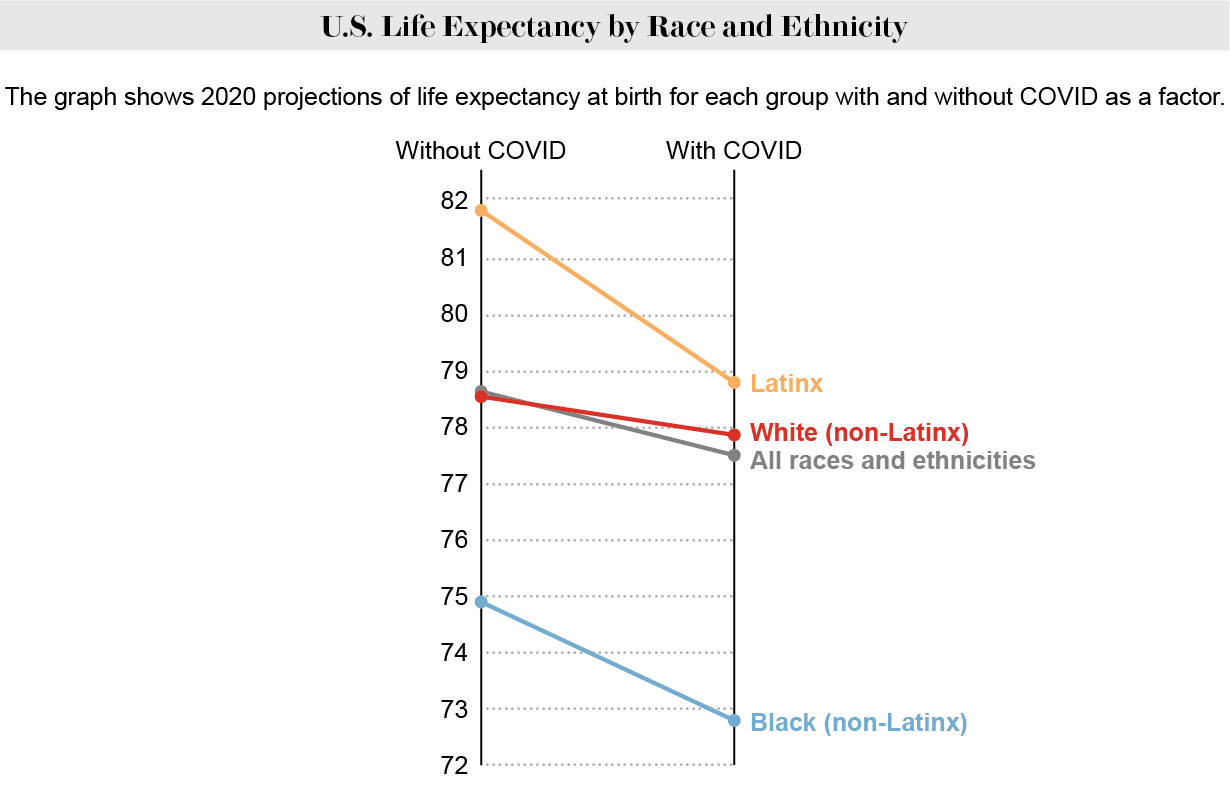
” Right now the most important barrier is really the restriction around age just and not allowing for race to be sculpted out as its own classification,” says Nneka Sederstrom, primary health equity officer at Hennepin Healthcare in Minnesota.
The problem stems from “a deep-rooted inability to name race as its own aspect” in illness danger, Sederstrom states. She includes that every lawyer she has actually sought advice from contends that singling out race as a criterion for eligibility breaches the 14 th Modification, which extended citizenship and equivalent rights to Black Americans and anyone born or naturalized in the U.S. “If you’re stating that the modification that offers us the opportunity to supposedly deal with equity and equality is the important things that remains in the way of really dealing with equity and equality,” Sederstrom says, “then we need to change that.”
Some areas have currently been able to use lower age cutoffs for vaccinating Native Americans, who have actually also become sickened and passed away at greater rates throughout the pandemic.
Another barrier to getting vaccinated is difficulty in registering for visits online. And many people of color work in hourly tasks that do not offer them time off to invest long stretches of time looking for vaccine consultations.
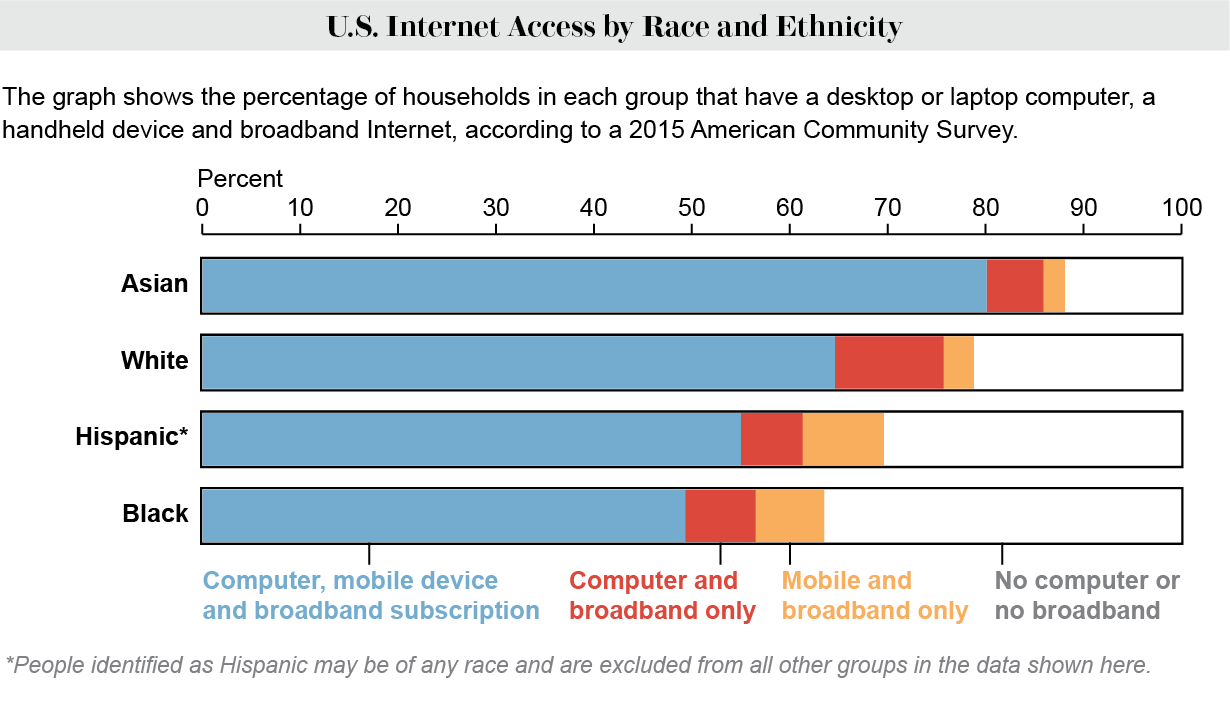
In Maryland, the Vaccine Hunters have actually been assisting senior citizens and people of color register for consultations.
One problem for Hispanic people has actually been Web sites with poor Spanish translations– often resulting from a common automated tool. “The grammatical mistakes we discovered would have made it impossible for a Spanish speaker to find out what was being asked,” says Peterson, a native Spanish speaker who teaches the language at the high school level. That confusion could waste valuable time as appointments fill up. Her employee reported one registration system’s poor translation to the city government, and within days they were meeting with county authorities to improve it. “If it’s an official document, and it’s not written correctly, it loses credibility,” Peterson states.
Getting to vaccination sites can likewise be an obstacle. They are not constantly near public transit, and not everybody has access to an automobile. An analysis of study information discovered that in 2017 Black households were the least most likely of any racial or ethnic group in the U.S. to own a lorry, followed by Native American families. Montgomery is Maryland’s a lot of densely populated county, with an excellent city system and buses. Its closest mass vaccination site is at a Six Flags America style park, which is a several-hour bus flight from most parts of the county.
In Chicago’s South Side, which is predominantly Black, one must make a 30- minute drive or take an approximately hour-long bus flight to get to the mass vaccination website at the United Center in the city’s downtown location, says Armani Nightengale, a contact tracer at the Calumet Location Industrial Commission who is also assisting people make vaccination appointments. “We had a circumstances of appointments opening up the day of, and we asked individuals if they desired to come in today,” Nightengale says. Lots of people have work or are taking care of kids and can not simply drop everything to get immunized.
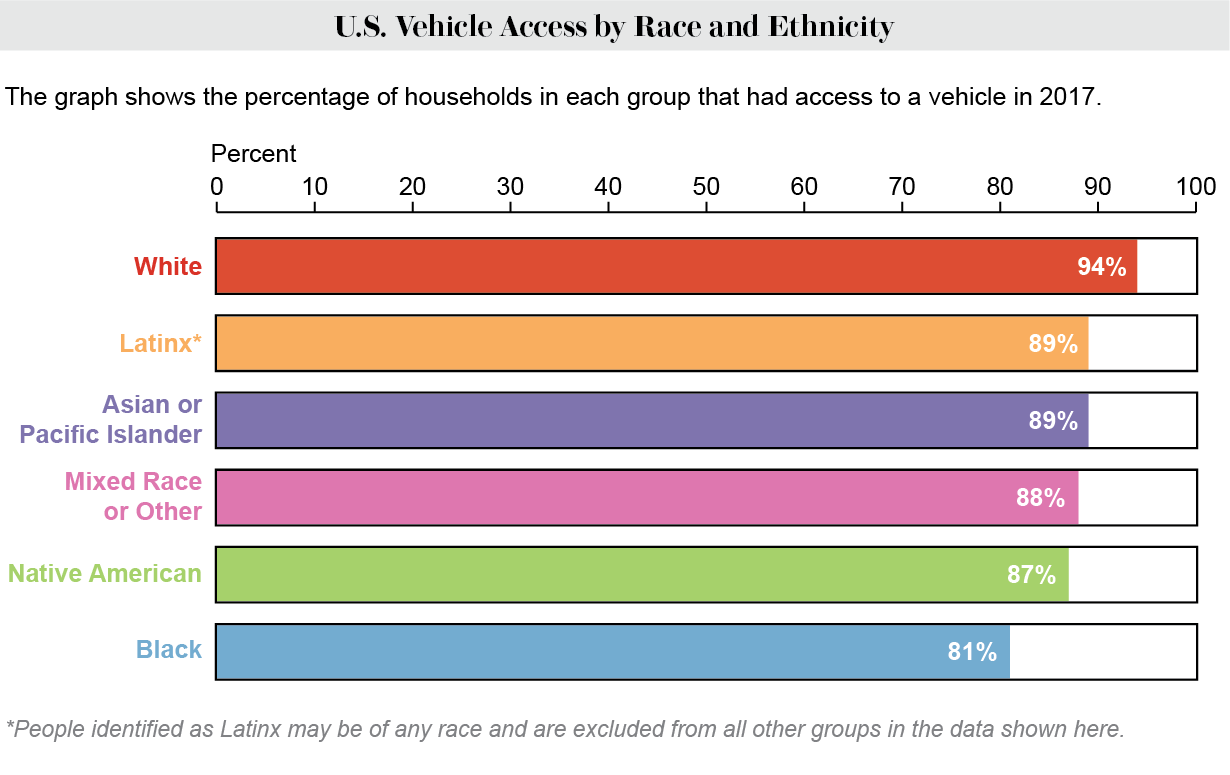
In addition to these barriers, there is the issue of vaccine hesitancy. Black Americans are still more most likely than white Americans to withstand getting a vaccine, although this gap has actually reduced over time
Uché Blackstock thinks a number of the issues people have about vaccination are addressable. “A lot of people of color who have concerns about the vaccine are not an adamant ‘no,'” she says. “A significant percentage are ‘wait and see.'”
” Hesitancy does not mean refusal,” Sederstrom notes.
Editor’s Note: The term Hispanic refers to individuals of any race whose heritage is in Spanish-speaking nations. Latinx is a gender-neutral alternative to Latino and Latina that describes those of any race whose heritage is in Latin America. For the purposes of this post, these terms are utilized rather interchangeably, although the majority of the group information employ Hispanic.

No comments:
Post a Comment